
Drawing Back from the Edge: Community Based Response to Violence in North Belfast, by Neil Jarman (1999)[Key_Events] Key_Issues] [Conflict_Background]
The mobile phones were distributed prior to the Tour of the North parade on 19 June. Although the event passed off peacefully and without significant incidents, it did serve to raise tension in the area, and it also gave phone holders in many areas an opportunity to make a range of contacts almost as a dry run before the anticipated trouble after the Drumcree parade. A second Orange Order parade from the Shankill area along the Springfield Road to Whiterock Orange Hall on 27 June also impinged upon the area with part of the parade coming down the Crumlin Road past the Ardoyne shops. This again passed without any major incident in the area although some concerns were raised at the Glenbryn/Alliance interface. There were also a small number of incidents, mainly involving sectarian attacks on property, which were reported in a number of interface areas on the days prior to the Drumcree parade. Therefore although the phone network was brought most widely into use after the Drumcree parade had been stopped, there had already been a number of occasions when calls had been made and communities had been mobilised. The civil disturbances that occurred across North Belfast following the re-routing of the Drumcree church parade was neither as serious nor as widespread as had been feared and anticipated. Demonstrations of support for the Orangemen were largely restricted to peaceful street protests and the blocking of main roads. Where actual confrontation occurred it was between loyalists and the police. There were few instances of clashes between the two communities. Most of the interfaces remained tense but quiet. There were a number of reasons why North Belfast, and other parts of the city, remained relatively quiet. First there was certainly not the same intensity of protests mounted by the Orange Order and their supporters as had been experienced two years ago when there had been nightly parades near a number of sensitive interfaces. The protests this year were much more restrained. In part this may have been due to the style of policing which aimed to constrain protests to loyalist areas and reduce the possibility of clashes at interfaces. While street protests were largely tolerated, fixed patrols were placed at a number of key locations and police officers said they made it clear to people early on that they would react in a severe manner to stop things getting out of hand. They were also willing to liase and work with a wide range of community activists in an attempt to maintain public order. Second, political activists and members of some paramilitary groups also worked hard to keep things calm and to maintain the peace. In the nationalist community there were ongoing attempts to keep people away from interface areas and to ensure that the focus of attention was on the relations between the RUC and loyalist protesters. But also in many loyalist areas activists tried to restrain the violence and argued against people causing damage and destruction to their own neighbourhoods. Another reason why more serious trouble did not occur was due to the work done by a range of community activists, both men and women, across the north of the city. Many people in both communities worked hard both through the day and through the night to keep the various areas quiet. Community activity in relation to public order problems took a variety of forms during the Drumcree protests. Among the most significant were the following ways of mobilising community workers and activists:
The mobile telephones were a key factor in this work. In the period prior to the Drumcree parade and for the week following it CDC staff remained on 24 hour a day call and helped to co-ordinate and monitor the phone network. During this time the Director of CDC and the Community Bridges workers remained in regular contact with all phone holders, with statutory agencies, with local politicians and with the police. They maintained contacts with a range of local groups and were able to respond quickly to a range of incidents, sometimes these were dealt with by phone and sometimes a physical presence was needed. The phone network enabled the phone holders to:
The main uses of the mobile phones were to:
The following sections consider in more detail how the mobile phones were used by community activists to reduce the scale of violence and defuse tensions in North Belfast. 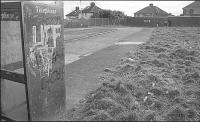
The ability of distinctive communities to deal with problems of street violence and public order problems in their areas depends on the scale of local community infrastructure, the quality of local organisations and on their capacity to mobilise people. Many communities find it difficult enough to mobilise people to attend meetings or assist with festivals or run local groups, it is often more difficult to mobilise people to be prepared to deal with trouble on the streets which often occurs late at night or after dark. Many of the communities in North Belfast have been able to rely on a small number of men and women who were prepared to give time and effort to try to ensure that the summer months pass peacefully. They have devised a variety of ways to ensure their areas remain as safe as possible. Maintaining street patrols in troubled interface areas has been one form of activity that some communities have adopted. In some areas more organised Neighbourhood Watch groups have been maintaining regular patrols as part of local routines, but in many cases patrols are only initiated in response to a rise in activity at the interface or at times of increased tension during the marching season. Although such patrols have been more widespread in nationalist areas of the city they have also been organised in some loyalist areas. Patrols were mobilised in many interface areas during late June and early July. The patrols usually involve small groups of men walking the area from late at night until the early hours of the moming. The intentions of many are more narrowly focused; they aim to protect their area from incursions from gangs from neighbouring areas and to prevent or to stop members of ones own community from causing trouble at the interface. Such patrols often do little more than keep watch on potential flashpoints rather than actively walk around an area. The phones were used by local patrols in a number of ways:
While some see this form of activity as little more than vigilantism, many people in the affected areas regard it as the only way of providing the necessary security and reassurance at times of tension. In most cases the patrols act as a form of deterrence rather than becoming engaged in anything more active, and wherever possible verbal activity takes precedence over physical activity. The main concern for most people was in dealing with incidents and problems in their own immediate area but there are also strong links and networks of support between neighbouring and adjacent areas across the north of the city. A number of the activists made conscious efforts to maintain physical contact with other communities especially with some of the more isolated areas. North Belfast can be divided into three or four relatively large and continuous areas of loyalist or nationalist estates and streets. For example the Shore Road is a continuous area of Protestant communities from Tigers Bay to Graymount, similarly there is another large Protestant community in the Greater Ballysillan area. The large nationalist zones are from Ardoyne to the New Lodge along the Cliftonville Road and along the Antrim Road from New Lodge to Fortwilliam. But at the same time there are also a number of relatively isolated areas in which the people can feel more vulnerable at times of tension. This isolation takes a number of differing forms.
The mobile phones provide one means of maintaining lines of contact with such isolated areas, particularly at night or at times of trouble, but the simple act of paying a follow up visit the next day may prove to be equally reassuring. It was not always possible to predict where the most likely trouble spots would be and in some cases phones were given to people in areas which experienced relatively little trouble. A number of these activists recounted how they made visits to neighbouring areas which were experiencing more tension or to areas which were not part of the mobile phone network in order to check out how people were coping and to see if any assistance was needed. The third form of mobilisation was in response to actual incidents or threats of attack. Although the number of sectarian attacks was much reduced compared with recent years there were still a number of incidents and there were occasions when people were fearful of an attack. This had been a relatively widespread occurrence in 1996 and people realised that it was necessary to mobilise at an early sign of trouble rather than waiting to see how things would develop. The sight of a crowd gathering on the streets or near interfaces would be a cause for concern and could either lead to a similar mobilisation from the neighbouring community or in the case of the incident occurring at a relatively isolated area people might be mobilised from further afield. The very fact of two opposing crowds gathering on the streets can in itself help to escalate an already tense situation. However people felt the need to be prepared to defend their area or neighbouring areas from the possibility of attack and it was also argued that the presence of a large crowd might act as deterrence to potential attackers.
Not all reports of attacks resulted in a mobilisation of people; some incidents were readily dealt with by local activists.
In both cases the mobile phones were used to deal with actual incidents. In the first case the phone was used to bring in support from outside and in the second to report the incident to the police and to tell his own community that the situation was under control. There were other such incidents across North Belfast during the summer but these were all dealt with locally and did not develop into serious problems. 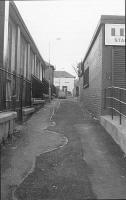
The most important feature of the placement of mobile phones in the interface communities is that they ensured that there should be a permanent channel of communication into each area. While the phones allowed people in each community to keep in touch with other areas, it was just as important that people could call in to the interface communities as be able to call out. One of the basic responsibilities for the phone holders was that the phones should be switched on and monitored twenty-four hours a day during the time they were held in the community. While it was noted that this meant being prepared to respond to a call at 3am, if need be, most phone holders accepted this responsibility. As one person said What's the point of having a phone Wits switched off Im not telepathic, I cant tell when someone is going to call. In some cases there were problems for the named phone holder to maintain the phone link twenty-four hours a day, seven days a week for the full two-month period. This was dealt with in a number of ways. in a number of cases different people monitored the phone for some of the period, providing holiday cover or similar for the named holder. In one or two cases the phone was by a community group and monitored by a number of people rather than by one particular individual. In both instances the phone was monitored full time. However in a number of areas the phones were no longer switched on after the Twelfth of July parades had passed. Some people went on holiday and did not pass the phone on to another member of the community, while some people felt that the time of trouble had passed and there was no need to keep the phone switched on. In most areas there were no incidents or problems after the Twelfth, but there were a small number of incidents which needed dealing with and a number of areas where the phones were still in use. A second area of responsibility was that each phone holder should be willing to call any other number on the network and be willing to respond to any call on their phone. Although there were no cases reported of phone holders not talking with particular people, it seemed clear from the interviews that most people largely spoke with community activists from their own community. There was a much greater reluctance to call to members of the other community, especially where existing contacts had not been established. In some cases CDC was used as an intermediary for cross-community contacts, in a few cases the RUC was used to make cross-community contacts. In most cases cross-community contact was only made with the area closest to the phone holder whereas intra-community contact was much wider. Most people said they called all or most of the numbers of their own community on the network as well as integrating other areas and individuals into their own personalised network. Phone holders were also asked to keep a log of the main incidents they dealt with or which the phones were used. A number of phone holders did keep a log, on sheets provided by CDC, detailing dates and time of incidents and how they were dealt with. However some phone holders stated that they were not given log sheets while others said that they were on the streets a lot of the time and it was impractical to keep a log. A final responsibility was that the phones should only be used to deal with community issues and should not function as a personal phone for the duration of the hire period. The interagency draft report of the use of mobile phones in 1997 had expressed some concern that the cost of the phones was more than double the estimated costs. However the total costs for the 12 mobile phones in North Belfast that year was only £4333, and there was no suggestion of any misuse or abuse of the phones. Those areas with the highest call costs were those areas with the most widespread and extensive disturbances. The costs for the 16 mobile phones provided by MBW in 1998 were even less, totalling £2976 for the two months that the project ran. In both years the phone networks were regarded as very cost effective projects. All phone holders stated that they phoned many of the other phone holders from their community at some stage during the early July period when tension was highest. Most people spoke regularly to the phone holder in the immediately adjacent areas and most said that they phoned all co-community phones at some time. All phone holders made and received calls from their side of the network. Most phone holders also had regular contacts with one of the CDC development workers, in some cases these links were made on a daily basis, in many cases a number of calls were made each day at the height of the trouble. Many of these calls were not in response to any particular incident but were simply to keep in touch, to hear what was happening in other areas and how people were bearing up. A number of phone holders made the point that such routine calls served to reassure people both in the callers own area and in the area being called. It thereby helped to reduce tension and calm peoples concerns. One of the main problems that had to be addressed was that of rumours. Rumours have proved to be a continual problem throughout periods of tension. This summer they were a particular problem at the beginning of the Drumcree period when there was considerable uncertainty as to how things would develop. If a rumour was addressed early enough it again provided reassurance, whereas if it was allowed to circulate and gain credibility it increased fears and tensions.
Often people would talk of mobilising to go and offer support to the supposedly threatened area. On a number of occasions in 1996 such rumours led to tense stand-offs between opposing crowds at interface areas and on one or two occasions this also happened in 1998. But more often the mobile phones were used to check out what was happening elsewhere and relay the information back to people in the local area. This enabled activists to calm peoples fears and to reassure them that friends or relatives in other areas were safe. Dealing rapidly with rumours and speculation also helped to reduce tension in the interface areas. The phones were also used to deal with rumours and actual incidents within ones own area. There was frequent speculation of what was happening at local interface areas particularly during the hours of darkness. It was important to deal with such stories or events quickly so that they could not escalate into anything more serious.
In such cases community activists went to the site of the incident to check out if there was a problem and to see how serious it really was. The mobile phones allowed people to then call back to an office or other community base and either tell people there was nothing to worry about or to call for assistance. The relaying of information could therefore be speeded up.
A number of phone holders reiterated that it was important to catch an incident early if they were to try to stop an escalation of trouble because once a situation got beyond a certain level there was nothing that activists could do. One person described their work as prevention not fire fighting. They had to try to prevent trouble starting rather than to stop it. If the fire took hold it would have to be left to the security forces to deal with the situation. In 1996 there was virtually no cross-community contact during the worst of the street disturbances, the availability of mobile phones ensured some such contact in 1997 and this increased still further in 1998. In at least three cases the cross-community calls were the first contact between the adjacent communities for some time. All six of the phone holders in these cases were pleased that communication was possible across the interface and problems had been dealt with in spite of the previous difficulties in opening dialogue.
In another area the contacts by phone had been possible because of ongoing contacts across the interface. They had built on and strengthened the existing relationship. In a fifth example the phones were used to talk with existing contacts but also drew in other people who had previously been unwilling to speak across the interface. The cross community contacts were therefore now deeper and broader. A few people said they phoned more widely simply to check out how people were. One phone holder said they had phoned every number at least once, although not all phones had been answered. One person rang the wrong number and spoke to someone from another area by mistake, the person who answered also rang back on a later occasions to see how things were, which was a surprise but was appreciated. Many people said that they appreciated the few spontaneous cross-community calls they received. However most people stated that while they regularly phoned members of their own community to see how things were in other areas, they only phoned into the other community if there was a problem to deal with. In a number of cases phone holders said that they did not call anyone from the other community at all. Some simply said that they felt they had no cause to do so, one person stated that if the other side wanted to cause trouble in their own area that was not his problem. The vast majority of cross-community calls that were made were to deal with problems, rumours or concerns. These were nearly all made to the neighbouring interface area. Again in the vast majority of cases people said that they got a positive response from the person they spoke to.
In some areas where crowds could see each other across interfaces it could be difficult to get people to be willing to make the first move to disperse, both side wanting the other to go before they did.
As well as the street protests and the tensions at interfaces caused by people standing on the streets or missile throwing there were a number of incidents over the presence of marching bands in loyalist areas. A number of people commented on the noise that was made, often through the night, and which was seen as deliberately provocative. It also seemed less easy to get music stopped than perhaps it was to get other incidents dealt with.
In all of the cases of cross community contact both sides spoke highly of the work done by people from the other side in trying to deal with their concerns and worries. In many cases problems were addressed, incidents were prevented and tension defused. Furthermore it would appear that over the period of use people became more confident that a phone call would achieve something and that someone from the other side would attempt to deal with their concerns. Although the mobile phone network was made up of community activists and workers a number of the phone holders would also be members of political parties. Many local areas also had their own contingency plans for dealing with trouble and their own networks of support and communication based around party activists who were willing and able to mobilise people at times of potential trouble. It was clear that some senior political figures spent a large amount of time moving around interface areas of North Belfast particularly during the Drumcree period, but also at other times of tension such as in the run up to the Tour of the North and the Whiterock mini-Twelfth parades. Much of their time was spent reassuring people and keeping in touch with local activists. But on a number of occasions they also acted as intermediaries with the police in relaying local concerns and pressing for a higher or more permanent police presence in tense areas. While many of the incidents that arose were dealt with by local people and community workers there were also a number of occasions when local political leaders were required to address specific problems. A number of people mentioned the work that was done by party members from Sinn Féin and the PUP, in particular, in trying ensure that the trouble did not get too serious in North Belfast and several of the phone holders spoke highly of the work that two or three key figures played in defusing difficult situations over the marching season. 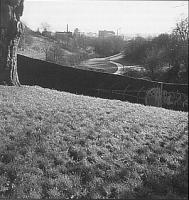
Contacts with Statutory Agencies After the violence in 1996 one of the major concerns raised by people in the interface communities was that lines of All mobile phone holders also had the names and contact numbers of a wide range of statutory bodies who would be on call should serious disorder break out again. The network numbers were also incorporated into the updated interagency emergency planning booklet alongside the statutory sector regarding office and out of office hours contact telephone numbers. Thus facilitating any necessary communication. Fortunately very little demand was placed upon these agencies. Only two phone holders stated that they had reason to phone the emergency number of the Housing Executive. In both cases this was after a house had windows broken in a sectarian attack.
A letter from a representative of the Northern Ireland Housing executive confirms this position: Given the scale of intimidation within Belfast in 1998 there were only limited instances that Executive staff and community representatives made contact outside office hours. Where it did occur my impression was that issues were addressed efficiently and effectively. This letter also expressed satisfaction with the work of the members of the phone network: The Executive has supported the provision of mobile telephones to community representatives ... and we believe that the communication channels that have been developed have been extremely valuable. Not only can situations where trouble might be about to happen be addressed by discussion between community representatives, it also give the Executive a direct line into assess circumstances where previously it might not be physically possible to do so because of ongoing violence. However despite the sentiments that are expressed herein there does not appear to have been much pro-active use of the network by staff or representatives of any of the statutory agencies. Apart from these two incidents that have been mentioned only one person referred to contacts with any statutory agency and that was a single phone call from the North and West Belfast Health and Social Services Trust to enquire how things were going. The same person suggested that it might have helpful or strengthened relationships with local communities if a representative of the statutory agencies or from the interagency group had called round the community network to gauge local feelings. Although contacts with the main statutory agencies were necessarily few, phone holders in a number of areas reported that they had spoken to a range of other bodies over the relevant period with regard to issues in their areas. Among those who would be included were the Parades Commission, the Mediation Network and City Bus. However these were calls made about general concerns over relations with these bodies during the marching period rather than requests for assistance with specific incidents.
The Police Communication with the police did not extent to all areas covered by the phone network. Phone holders particularly in nationalist communities have strong reservations about dealing with the RUC. In some instances CDCs Director acted as an intermediary regarding police action or inaction. There were cases where incidents occurred at or near the boundaries of police sub - divisions. North Belfast is covered by three separate sub divisions which tended to complicate matters of liaison and communication. This issue has now been addressed with the community affairs teams within each sub - division. The lines of communication with the police held up well for those who chose to use them. Complaints about policing methods particular the use of direct mobile support units (MSUs) did arise mainly from the Protestant community as is was their street protests that bought them into contact with the police but concern was also expressed by the nationalist community. It was claimed that too often the police were ready to make an aggressive response to a comparatively minor incident by sending in Mobile Support Units when dialogue might have produced a more effective outcome. Another series of incidents that brought protests from the Protestant community was when the police removed material that had been gathered for bonfires. The police argues that in many areas this material was being used to block roads and it was perfectly reasonable to remove it. From a policing perspective it is reported that the existence of the mobile phone network did allow for situations to be resolved on many occasions without police having to go to the scene. It was felt that this was beneficial in sensitive areas.
In general people reported few problems with the mobile phone network. The vast majority of phone holders felt that it had proved extremely useful as a tool to reduce tension and in dealing with incidents at the numerous interfaces, although as noted above concerns were raised from a number of people about liaising with the RUC as part of the project. While most people were full of praise for the way the network had been developed and utilised in North Belfast, there were also a few concerns raised about some aspects of the network in general:
Although the phone network seems to have been a useful means of defusing tensions and responding to local concerns the work placed a heavy burden on a small number of community activists and reactive projects such as this should not be seen as supplanting longer term plans for interface areas.
Overall these problems seem to have been minor factors and it should be possible to remedy them in any future operation of a phone network. The main concerns that were expressed by those interviewed was that although the phone network had worked extremely well it would have been better if it was enlarged and extended.
In general then people felt that the community phone network needed to be consolidated and extended. A number of people noted that they did not know if the phones would be available again this year until relatively late on and that serious consideration should be given to planning for the long term provision and funding of such a network for future years. As well as the work that was done by CDC in extending the phone network across North Belfast in 1998 interest in the idea was also taken up elsewhere.
These examples indicate that there is a wider recognition of the need to maintain lines of communication across interfaces, particularly at times of heightened tension, and at public order situations more generally. They also indicate acknowledgement of the importance of finding ways and means to empower local communities to address such problems themselves. 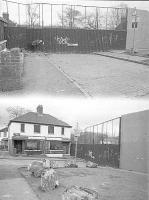
Few serious problems were raised with any aspect of the community phone network, and most people who were involved in it emphasised how useful it had been in empowering sections of the community to address the problem and concerns that arose in local areas. The main concerns that were expressed were that there were not enough mobile phones available and they were not available for a long enough period. There were also uncertainties, until quite close to the summer, about whether the phone network would in fact be reestablished in 1998 and, if it was, how many phones would be available. The feeling of many people was that the network needed to be extended both in time and in space. This was confirmed at a meeting of people involved in the network convened by CDC in December 1998, which had been called to discuss the draft report and discuss how the network should be developed for the future. Although it was always envisaged that the network would be a short term measure it was also acknowledged that some form of keeping lines of communication open during times of tension would be necessary for the immediate future. The members of the network felt that access to the phones needed to be consolidated and that the best way would be for CDC to confirm that funding was available over the next two or three years. It was recommended that funding be sought from a range of sources: that the statutory sector should continue to recognise its responsibilities in this regard, but that commercial sponsorship might also be considered. It was felt that the network had worked well as it was and that it was important to retain a degree of autonomy and independence: local groups should retain greater control over the number of phones available and the length of time they would be accessible to the community. This may well mean that CDC purchases a number of phones and these would be distributed when, and for as long as, members of the network felt was needed. If there were persistent problems in some areas the network might be kept running all year, if not the phones would be stored. It was recognised that having the phones was only part of the process. It was felt that the working relationships that had been started through common desire to maintain the peace should be encouraged. This might be done through the work of the Interface Groups co-ordinated through CDC or could be done through the network itself. It was also accepted that work needed to be done within the various communities to inform people of what the phones were being used for, who was behind the scheme and how they might best be accessed. This would be left to the groups themselves but might involve leafleting, news-sheets, meetings or other means of local communication. It was accepted that ways of expanding the network should be considered. It was widely recognised that more phones were required to cover all the interface communities in North Belfast. It was also agreed that the boundaries of the network might need to be expanded, particularly in the Shankill area, and that some expansion could be done by including people who already had mobile phones into the network, this might mean that some areas had more than one point of contact. At the same time it was accepted that the network should remain based in North Belfast rather than try to expand to include other parts of the city, although if people in other areas wanted to set up their own networks CDC would give whatever support was practical. The publication of this report was seen as part of the process of encouraging other such approaches to conflict management. Although it was felt important for the network to remain independent, it was also agreed that contacts with the statutory agencies and other bodies were very important and those relationships should be maintained and developed with a view to improving communication, liaison and practices still further. It was suggested that members of the network should meet with representatives of the appropriate statutory bodies to facilitate this. One key factor is clear from the evaluation of this work: the need for a strong community base to underpin the initiatives such as the community phone network. The mobile telephone is a useful technological development but the technology is no more than a tool. It needs the community infrastructure to allow it to be used most effectively. CDC has worked for many years in North Belfast to support and encourage a range of community development strategies which are designed to encourage active citizenship and to empower those who have been deprived of power and of control of their common affairs. Community development work aims to promote and develop structures, which allow for genuine participation and involvement in civil and political society. It emphasises the importance of developing skills, knowledge and experience which will enable people to act together and take initiatives to influence social, economic and political issues and to participate fully in the democratic process. The mobile phone network is one example of the practical expression of such community development work. 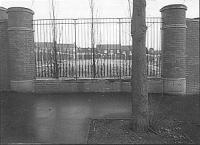 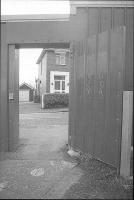
This report was researched, written and revised between August 1998 and January 1999. It illustrates the positive impact that community workers and activists can have in potentially difficult and violent situations. However it is also clear that people can only have such an impact if there is a broad desire to avoid local conflict, and if there is an appropriate space created by political, statutory and paramilitary actors. Community organisations and activists can then operate within that space to counter rumours, reduce tensions and help prevent disorder. In the past few years the tensions created during the summer months have placed considerable strains on inter-community dialogue across North Belfast. The work done by members of the mobile phone network helped re-open processes of communication and thereby in turn has created space for the re-establishment of dialogue between some communities after the summer tensions had died down. However the possibility of maintaining and developing cross-community dialogue is not simply dependent on local relationships, it is, and always will be, closely connected to the wider political process. There is a very real impact at community level when the political negotiations stutter and stall. Meetings are called off, dialogue is closed down, people become reluctant to stick their neck out and positions become retrenched. As the 1999 marching season begins and there is talk of parking the implementation of the Good Friday Agreement tensions are once again rising. The sense of achievement that is expressed in this report is being questioned. This is not to deny the real impact that the community network had in 1998, but it is an acknowledgement that the network was one part of wider conjunction of social and political forces working for similar aims. It is far from clear whether such a common purpose will be generated again this year. It is one thing to swim with the tide and quite another to try to swim against it. 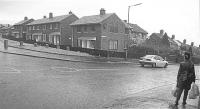
Acknowledgements
| |||||||||||||||||||||||||||||||||||||||||||||||||||||||||||
CAIN
contains information and source material on the conflict
and politics in Northern Ireland. CAIN is based within Ulster University. |
|
|
|||
|
Last modified :
|
||
|
| ||